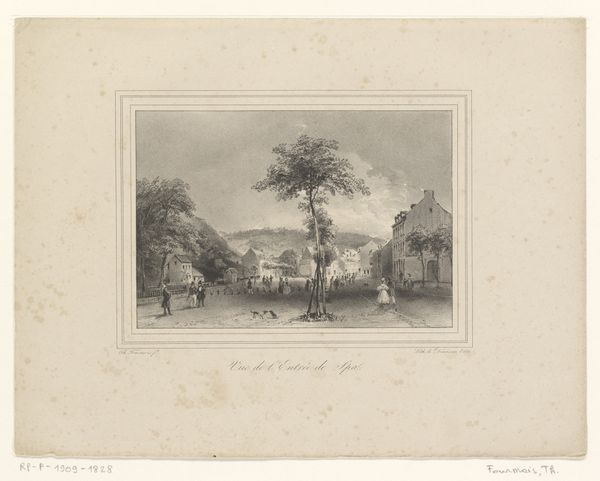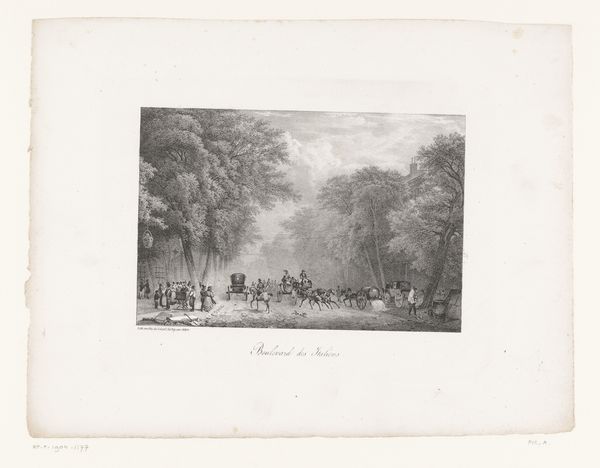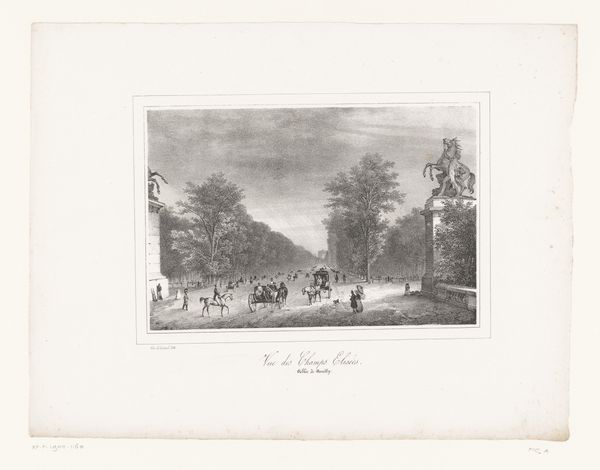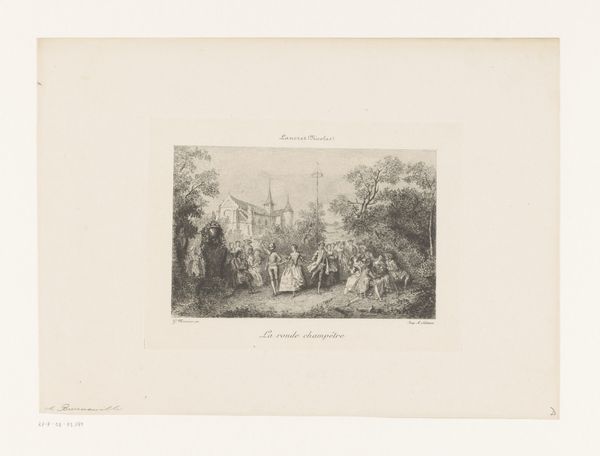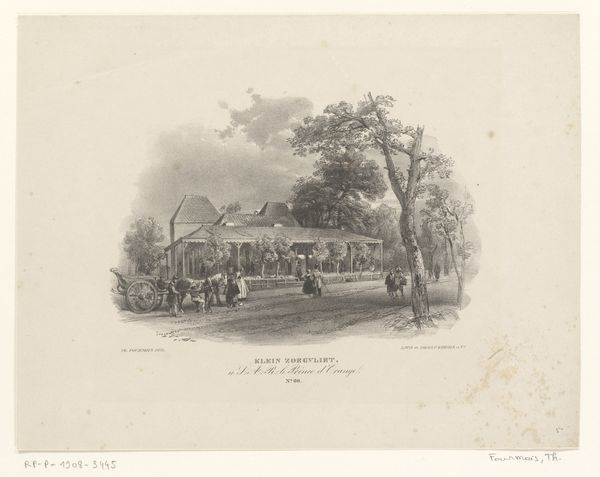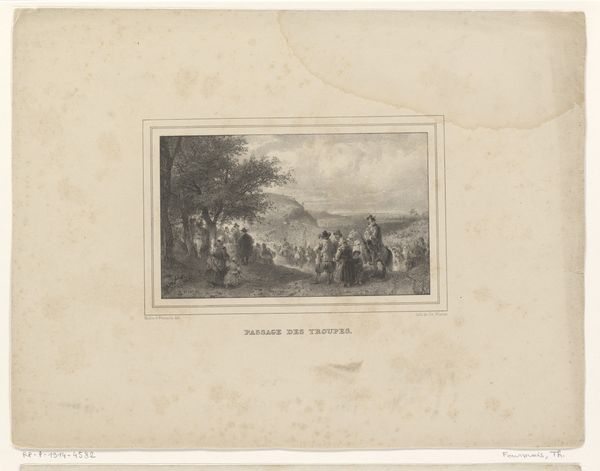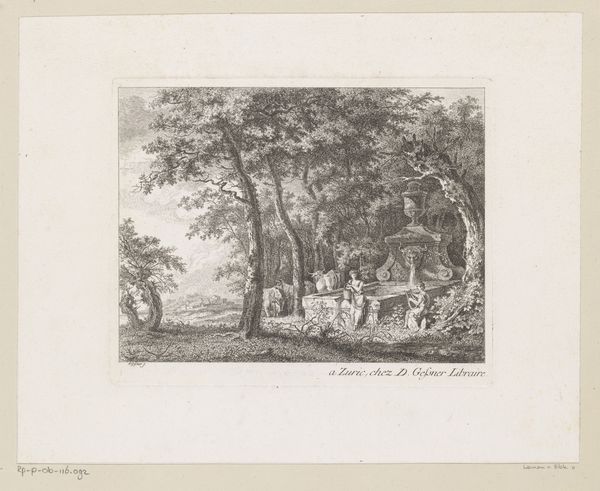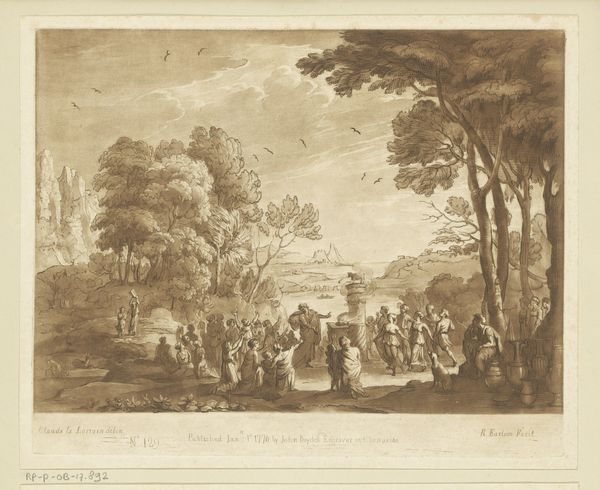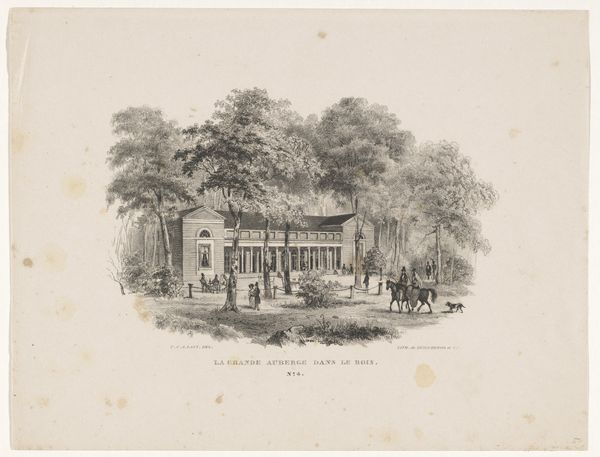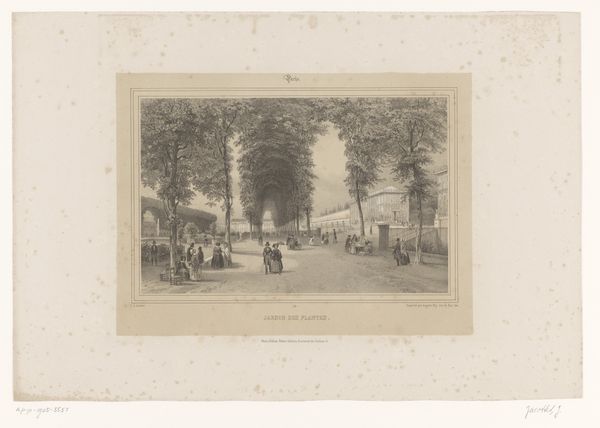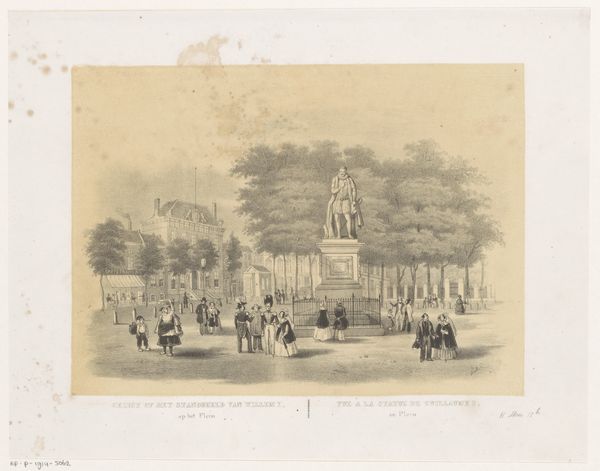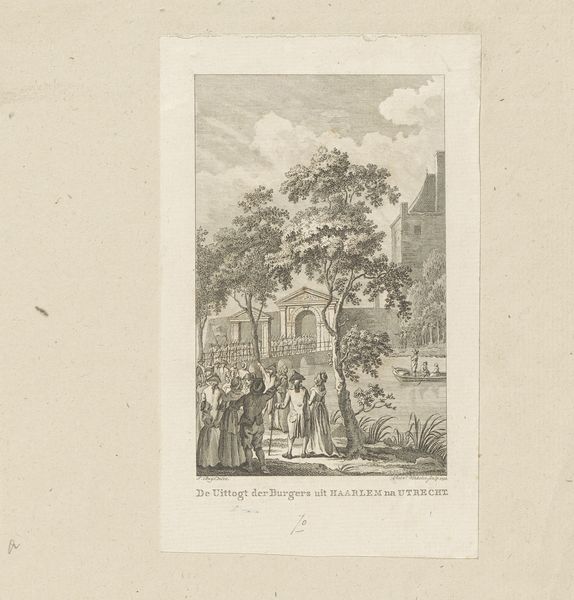
print, etching
# print
#
etching
#
old engraving style
#
landscape
#
romanticism
#
cityscape
#
genre-painting
Dimensions: height 240 mm, width 307 mm
Copyright: Rijks Museum: Open Domain
Curator: Here we have Théodore Fourmois' "View of the Promenade at Spa", created around 1833. It’s an etching depicting fashionable society at leisure. Editor: The overwhelming sense for me is the print’s stillness—the way the symmetrical rows of trees enclose the figures in this formal garden, as if staging them. It's quite picturesque, if a little…stiff. Curator: Well, Spa was *the* place to be for the elite in the early 19th century! It was a hub for socializing, political intrigue, and, of course, taking the curative waters. The etching captures that staged, performative aspect of upper-class life. Look at how deliberately everyone is positioned. Editor: Exactly. Note the strict parallel lines and the tonal range is very constrained, almost like a photograph even though this came much earlier than photography’s prominence. How deliberate, right down to the finery everyone seems to wear. Curator: The artist emphasizes the formality and order expected of such a gathering. Spa served as a microcosm of European society, reflecting its hierarchies and codes of conduct. This artwork acts as a visual document of that social order. Editor: Yet within that order, you can find touches of Romanticism – in the trees that almost feel gothic with the shade. Fourmois has organized a scene, as it offers this kind of contrast. The line work creates textures that play beautifully off each other. Curator: Absolutely. And beyond Spa itself, consider what locations like this meant. The promenade wasn't merely a space for leisure, it was an arena where social status was displayed, alliances were forged, and news was spread. Think of it as an early form of networking! This work really gives insight into the social dynamics of the era. Editor: Indeed. Looking again, it's impossible not to appreciate the precision in the trees' arrangements, and that central void in the scene. Fourmois’ success is about the many ways to interpret the patterns and their effect on each element. Curator: For me, it highlights how even leisure was shaped by the strict social norms of the 19th century. A seemingly simple scene carries the weight of societal expectations and political undertones. Editor: I see now that you mentioned it. This isn't merely a scene but almost a stage for society, cast in precise tones and texture, of a carefully arranged landscape. Curator: Precisely. Fourmois offers us a window into a world where every promenade was a performance.
Comments
No comments
Be the first to comment and join the conversation on the ultimate creative platform.
